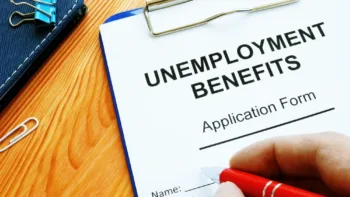
Unemployment benefits can be a lifeline for millions of Americans, but the system is facing mounting challenges—from a surge in jobless claims to pandemic-era fraud cases still unraveling in court. Are we headed for a crisis, or is this just another bump in the road? Let’s break down the latest data, shocking fraud revelations, and lawsuits that could reshape how unemployment benefits work.
? Unemployment Claims on the Rise—What’s Behind the Uptick?
As of March 15, 2025, the U.S. Department of Labor reported an increase in initial unemployment claims, and they’re raising eyebrows:
• 223,000 new jobless claims were filed as of March 15, 2025—a slight but notable jump from 221,000 the previous week.
• This marks the highest level in three months, signaling a potential shift in the labor market.
• While unemployment remains relatively low at 4.1%, layoffs are creeping up, especially in tech and finance.
• The U.S. is currently paying out a staggering $2.3 billion per month in unemployment benefits, totaling $27.6 billion annually—raising questions about long-term sustainability.
With inflation concerns still lingering and companies tightening budgets, the job market is shifting. The big question: Are we seeing early warning signs of a bigger employment downturn?
Pandemic-Era Fraud: How One Scammer Stole $152,000—and What It Means for the System
Think pandemic relief fraud is old news? Think again. The government is still uncovering massive scams that drained billions from unemployment programs.
Case in point: Collins Bozil, 26, from Albany, just pleaded guilty to running a pandemic unemployment scam that netted him $152,000. His crimes?
- Wire fraud
- Aggravated identity theft
- Forging Treasury checks
He now faces a minimum of 2 years and up to 20 years in prison and has agreed to pay restitution.
But this is just one drop in a very murky bucket. Federal reports estimate pandemic-era unemployment fraud cost taxpayers over $100 BILLION, with criminals using stolen identities, fake businesses, and even organized crime networks to siphon funds.
To combat this, federal and state agencies are tightening fraud detection systems, rolling out:
• Stricter identity verification to block fraudulent claims.
• Enhanced data-sharing between agencies to catch scammers faster.
• Tougher eligibility checks to prevent misuse of benefits.
But is it enough? Many worry these measures could also make it harder for legitimate applicants to get the help they need.
Michigan’s $55 Million Unemployment Lawsuit: Thousands Still Waiting for Justice
While fraudsters gamed the system, many legitimate workers were wrongly denied benefits during the pandemic—and they’re still fighting to get what they’re owed.
A $55 million class-action lawsuit in Michigan is set to compensate workers whose claims were improperly denied due to state processing errors. But there’s a hitch—the case has now been delayed by another month.
This lawsuit includes:
• Workers who were unfairly denied unemployment benefits.
• Allegations of system-wide administrative failures.
• A pending settlement that could help thousands of struggling job seekers.
This case highlights a major flaw in the unemployment system—outdated state processing systems that still cause delays and wrongful denials years after the pandemic began.
What’s Next? The Future of Unemployment Benefits in the U.S.
With jobless claims ticking up, fraud cases still emerging, and lawsuits piling up, the unemployment benefits system is at a crossroads.
One thing is clear: The way unemployment benefits are managed is changing—fast. If you’re a worker, a job seeker, or an employer, now is the time to pay attention. Stay informed. Stay prepared. Because when it comes to unemployment benefits, the rules (and the risks) can shift.



